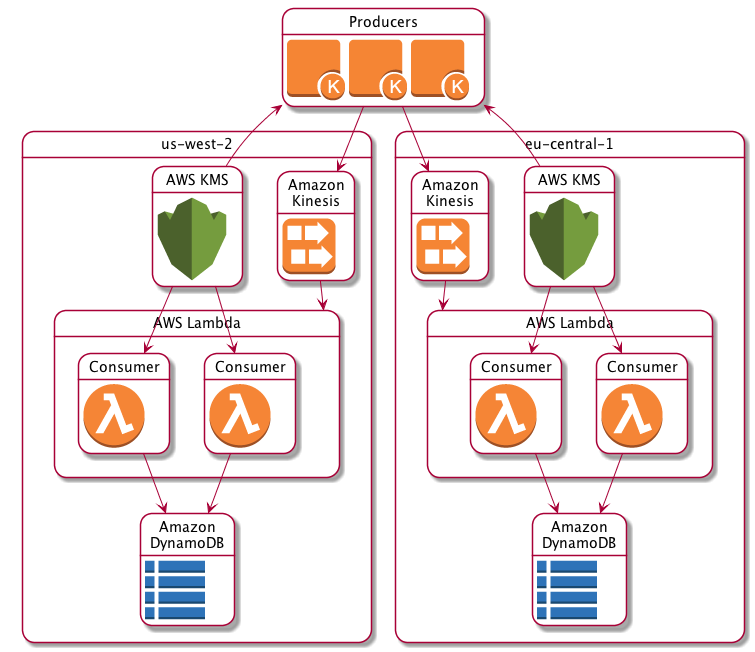Data key caching example
This example uses data key caching with a local cache to speed up an application in which data generated by multiple devices is encrypted and stored in different Regions.
In this scenario, multiple data producers generate data, encrypt it, and write to a Kinesis stream
You can find the source code for these examples in Java and Python. The sample also includes a CloudFormation template that defines the resources for the samples.

Local cache results
The following table shows that a local cache reduces the total calls to KMS (per second per Region) in this example to 1% of its original value.
| Requests per second per client | Clients per region | Average requests per second per region | |||
| Generate data key (us-west-2) | Encrypt data key (eu-central-1) | Total (per region) | |||
| No cache | 1 | 1 | 1 | 500 | 500 |
| Local cache | 1 rps / 100 uses | 1 rps / 100 uses | 1 rps / 100 uses | 500 | 5 |
| Requests per second per client | Client per region | Average requests per second per region | |||
| Decrypt data key | Producers | Total | |||
| No cache | 1 rps per producer | 500 | 500 | 2 | 1,000 |
| Local cache | 1 rps per producer / 100 uses | 500 | 5 | 2 | 10 |